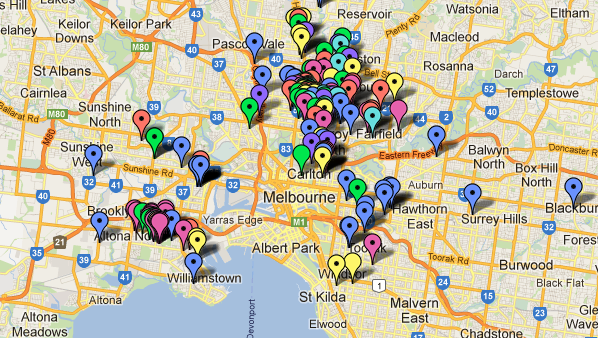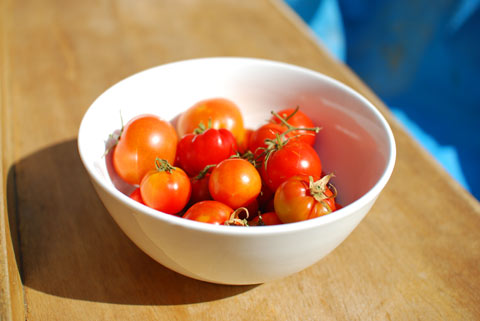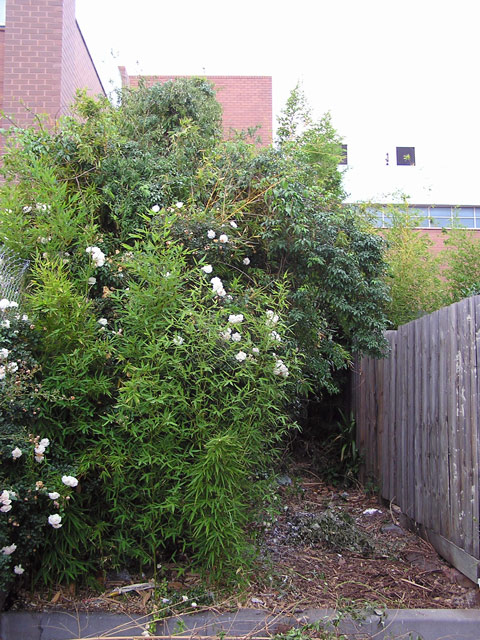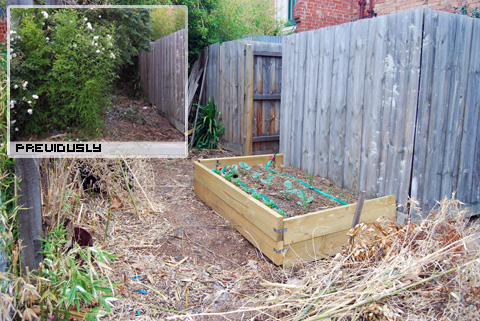
The guerilla garden continues apace with one rude surprise. The bamboo has been chopped down and left aside to mulch as much material as possible before I call in the council to remove the woodier stalks.
The rude shock is that beneath the thin ground cover of rotting bamboo leaf and years of accumulated trash, the bluestone and tarmac alleyway is intact. There is no soil beneath, apart from a few spots where the road surface is collapsing. So I scraped up as much of the ground cover as possible, built a raised bed and put in a compost bin to mulch kitchen scraps (and bamboo); added a good thirty kilos of cow manure and have planted the first crop of winter greens.
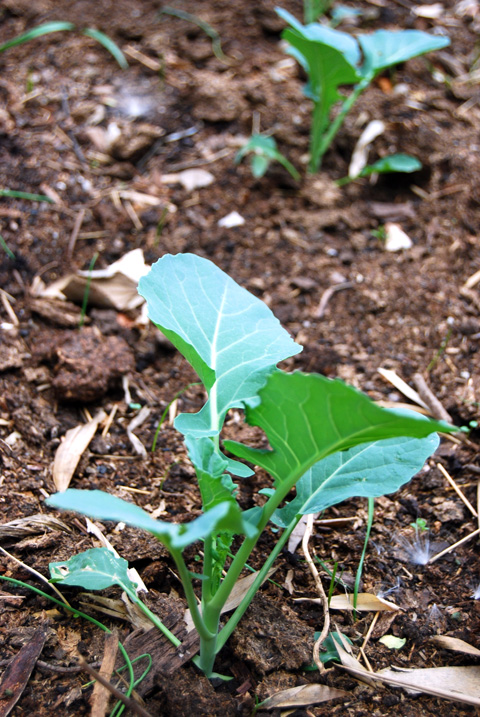
Nothing fancy, just broccoli (above), onions, leeks, spinach. I don’t expect it to be the best of crops and my plan is to plant some climbing beans after the leeks come up at the back to take advantage of the fence.
As for how to compost whole cows, I’ve been researching feedlots in Australia for another unrelated project. According to the South Australian EPA’s Guidelines for Establishment and Operation of Cattle Feedlots in South Australia, 2nd Edition, 12.5.1 Composting
Adult cattle should be composted using the following method:-
1.In the manure stockpile area, or approved composting site, place a layer of dry organic matter 30 – 45 centimetres deep on the ground over an area slightly larger than the carcase. Straw, sawdust or hay are all suitable.
2.Place the dead animal on the bed and cover with another layer of the dry organic material to a depth of 30 centimetres.
3. Cover the whole lot with 60 centimetres depth of semi-dry organic material such as feedlot pen manure, stockpiled manure, or silage. This layer needs to be at least 60 centimetres deep to contain odours and exclude scavengers.
4. Allow the pile to “work” for 20 days undisturbed. Internal temperatures should reach between 65 – 75oC.
5. After 20 days, or when the internal temperature falls below 60oC, turn the pile and expose the carcase. Cover the carcase again with 30 centimetres of dry organic material and 60 centimetres of semi-dry material.
6. Allow the pile to “work” for another 20 days undisturbed. Internal temperatures should reach 70oC and then slowly decrease. After the 40 days only large bones and some hair will remain.
The composted carcase can then be incorporated with manure or solid wastes for spreading on land.
